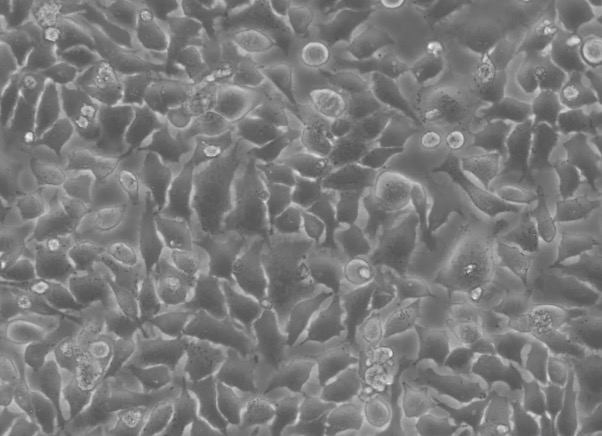Becoming a phlebotomist is an attractive career choice for those seeking a hands-on role in the healthcare field, with the added advantage of getting started quickly. Phlebotomists are essential medical professionals responsible for drawing blood samples for various diagnostic tests and procedures, making them a valuable part of any healthcare team. With a strong demand for phlebotomists in hospitals, clinics, and labs, it’s crucial to understand the time investment required to become one. So, how long does it take to become a phlebotomist? Let’s discuss.
The journey to becoming a certified phlebotomy technician typically takes about 8-12 months, depending on the program and individual progress. This includes a postsecondary, non-degree award from a phlebotomy program and 20-40 hours of coursework to obtain phlebotomy certification. While the timeframe is relatively short compared to other healthcare careers, aspiring phlebotomists need to have a solid understanding of the skills, responsibilities, and certification requirements essential for success.
Understanding the Role of a Phlebotomist
A phlebotomist is an essential member of the healthcare team, serving a vital role in patient care. They are responsible for accurately collecting blood samples from patients for various purposes such as diagnostic testing, transfusions, or donations. Their job requires a unique blend of technical skills, communication, compassion, and attention to detail.
Phlebotomists interact directly with patients, making their demeanor and bedside manner critical to the patient experience. They must have the ability to put patients at ease and clearly explain the blood draw procedure while answering any questions or concerns. Strong interpersonal skills and a compassionate attitude help to create a comfortable environment for patients during this process.
In addition to patient care, phlebotomists are also responsible for following strict safety protocols and procedures. They must have a thorough knowledge of safe needle handling practices, equipment sterilization, and specimen storage. This ensures the samples are not contaminated which could lead to inaccurate test results, and the phlebotomist and patients are protected from potential health hazards.
Attention to detail plays a crucial role in a phlebotomist’s duties as well. They must carefully label and document all collected samples to avoid any mix-ups or errors in the testing process. Proper documentation also contributes to an efficient work environment, allowing other healthcare professionals to correctly interpret and utilize the test results.
In summary, a phlebotomist is an integral part of the healthcare team, serving as the vital link between patients and the medical professionals who rely on accurate blood samples for diagnosis and treatment. Their unique skill set, which includes excellent communication, compassion, and attention to detail, contributes to the overall success and efficiency of the healthcare system.
Phlebotomy Training Requirements
To become a phlebotomist, individuals need to meet specific training and educational requirements. The first step is typically obtaining a high school diploma or GED. This is a prerequisite for most phlebotomy training programs.
Phlebotomy training can be found at community colleges, vocational schools, and various medical institutions. These courses generally take a few months to a year to complete. The curriculum is designed to provide students with the necessary knowledge and hands-on training to perform venipuncture procedures confidently and safely.
Some core subjects covered in phlebotomy training programs include anatomy, physiology, and medical terminology. These topics provide a foundation for understanding the human body and the language used in the healthcare industry.
During their education, phlebotomy students will also learn about various venipuncture techniques, specimen collection, and handling procedures. Additionally, students receive guidance in maintaining a sterile environment and practicing safe bloodborne pathogens handling techniques.
Hands-on training is a crucial aspect of phlebotomy education. Students will practice drawing blood, using needles and other equipment, and gaining experience in working with a wide variety of patients. This practical experience is essential to promoting patient safety and comfort while performing successful blood draws.
In conclusion, the training requirements for phlebotomists consist of a high school diploma or GED, followed by a phlebotomy technician program that includes courses covering anatomy, medical terminology, and physiology. Hands-on training in venipuncture techniques and specimen handling is an integral part of the educational process, with the overall goal of preparing students for confident and competent practice in their future careers as phlebotomists.
Phlebotomy Certification Process
The process of obtaining a phlebotomy certification involves completing an accredited education program, hands-on clinical training, and passing a certification exam. There are several reputable organizations that offer phlebotomy certification, such as the American Society for Clinical Pathology (ASCP), the National Healthcare Association (NHA), American Medical Technologists (AMT), and the National Center for Competency Testing (NCCT).
To be eligible for certification, individuals must first complete a phlebotomy education program accredited by an organization like the National Accrediting Agency for Clinical Laboratory Sciences (NAACLS). These programs typically last from a few weeks to several months and include both classroom instruction and practical training in clinical settings. Topics covered in these programs generally include anatomy, medical terminology, infection control, blood collection techniques, and patient care.
Once the phlebotomy education program is completed, candidates must gain practical experience through hands-on clinical training. This practical training may be part of the education program or obtained separately through internships or entry-level positions in healthcare facilities. The required amount of clinical experience varies by certifying organization, but generally involves a specified number of successful blood draws and/or hours spent performing phlebotomy procedures.
After completing the educational and clinical requirements, aspiring phlebotomists must pass a certification exam offered by one of the certification bodies mentioned earlier. These exams typically consist of multiple-choice questions and may also include practical components to assess the candidate’s competency in performing phlebotomy procedures. It is important to note that each certification organization has its own specific eligibility criteria, exam content, and testing procedures, so candidates should research the requirements of their desired certification body before registering for an exam.
Maintaining phlebotomy certification usually requires ongoing continuing education and renewal of the certification every couple of years. This ensures that certified phlebotomists stay up-to-date with the latest techniques, industry standards, and best practices in their field.
In summary, the phlebotomy certification process consists of completing an accredited education program, obtaining hands-on clinical training, and passing a certification exam from a reputable organization. With a phlebotomy certification, individuals can demonstrate their competence and dedication to the field and may have access to better career opportunities and earning potential.
Key Skills and Qualities of a Phlebotomist
A successful phlebotomist possesses a combination of hard and soft skills needed to efficiently perform their job. These individuals are responsible for collecting blood and fluid samples from patients, which requires both technical expertise and interpersonal abilities.
Venipuncture is a critical skill for phlebotomists, as it involves drawing blood from a patient using a needle. This procedure demands precision, accuracy, and a steady hand to minimize discomfort and ensure the sample is collected correctly.
Hand-eye coordination and dexterity play a crucial role in performing venipuncture, as phlebotomists need excellent fine motor skills. This ensures proper control over the needle insertion and withdrawal while minimizing the risk of injury or sample contamination.
Coordination is essential for a phlebotomist’s ability to balance and prioritize multiple tasks, such as preparing supplies, labeling samples, and maintaining a clean working environment. Organization and attention to detail help minimize errors and streamline the workflow in a busy healthcare setting.
Communication is a vital aspect of a phlebotomist’s role, as they continuously interact with patients, physicians, and other healthcare professionals. Effective communication skills help phlebotomists explain procedures, address patient concerns, and ensure a smooth collaboration with other team members.
In summary, phlebotomists need a diverse set of skills and qualities, including venipuncture, hand-eye coordination, dexterity, coordination, and communication abilities. These competencies enable them to deliver efficient and high-quality patient care in their essential role within healthcare facilities.
The Job Market for Phlebotomists
Phlebotomists play a crucial role in the medical field by collecting blood samples from patients for various health screenings, donations, and research purposes. They mainly work in hospitals, clinics, diagnostic laboratories, and blood donation centers.
According to the U.S. Bureau of Labor Statistics, the median annual wage for phlebotomists was $38,530 in May 2022. The job market for phlebotomists has been experiencing steady growth, with an 8% increase in employment projected from 2022 to 2032, which is faster than the average for all occupations. This growth can be attributed to the rising need for healthcare services coupled with an aging population.
There are about 19,500 job openings projected each year for phlebotomists over the decade, indicating ample opportunities for those in the profession.
The job market for phlebotomists is expected to grow by 24.5% between 2016 and 2026.
The best place to work as a phlebotomist depends on factors such as the desired workplace environment and geographical location. Hospitals, being fast-paced and busy settings, require phlebotomists who can efficiently manage the high patient volume. On the other hand, blood donation centers offer a more relaxed environment but may have fewer job opportunities compared to hospitals.
Phlebotomy technicians seeking employment in laboratories should possess strong analytical and problem-solving skills, as well as technical proficiency in handling laboratory equipment. Overall, opportunities for phlebotomists are abundant across various healthcare settings, ensuring a promising job market for those pursuing this career path.
To summarize, the job market for phlebotomists is growing steadily, with favorable employment prospects in hospitals, clinics, laboratories, and blood donation centers. As the healthcare industry continues to expand, so does the demand for skilled phlebotomists, making this an attractive profession for those looking to enter the medical field.
State Specific Information
In order to become a phlebotomist, the requirements and duration of training may vary depending on the state and the institution where the training is taking place. This section provides information about phlebotomy training in a few specific states, including California, Louisiana, Nevada, and Washington.
In California, aspiring phlebotomists must undergo a training program at an approved community college or vocational school. The program typically lasts less than a year and includes both theoretical and practical training. After completion, students must pass a certification examination offered by a recognized certifying agency, such as the National Healthcareer Association (NHA), the American Society for Clinical Pathology (ASCP), or the American Medical Technologists (AMT).
Louisiana requires phlebotomists to complete an approved phlebotomy training program, which can be found at various community colleges and vocational schools. These programs typically take less than a year to complete and may include both classroom learning and practical experience. Upon completion, students must pass a certification exam from a recognized organization, such as the NHA, ASCP, or AMT, to obtain their phlebotomy certification.
In Nevada, those looking to become a phlebotomist can enroll in a phlebotomy training program at a community college or vocational school. The duration of these programs generally ranges from three months to one year, depending on the number of hours required to complete the coursework and clinical practice. After successful completion of the program, candidates must pass a certification examination offered by a nationally recognized organization, such as the NHA, ASCP, or AMT.
Washington offers multiple options for individuals pursuing a career in phlebotomy, including training programs at various community colleges and vocational schools. The programs usually last less than a year and cover both theoretical and practical aspects of phlebotomy. Upon completion, students must pass a certification exam administered by a national certifying agency, such as the NHA, ASCP, or AMT.
In summary, the path to becoming a phlebotomist may vary depending on the state requirements and the specific training program. However, most programs can be completed in less than a year, followed by the successful passing of a certification examination from a nationally recognized agency.
Role Within Different Health Organizations
Phlebotomists play an essential role in various health organizations by conducting blood collection procedures from patients. They can be found working in hospitals, collaborating with healthcare professionals such as physicians and nurses to obtain blood samples for diagnostic purposes and monitoring patients’ conditions.
At community health centers, phlebotomists support local populations by participating in blood drives, screening events, and ensuring that blood samples are processed according to proper medical protocols. They are responsible for safely and efficiently collecting specimens, labeling them accurately, and ensuring that they reach the laboratory for analysis.
In medical facilities like private practices and outpatient clinics, phlebotomists work alongside physicians to provide a seamless patient experience. They are trained to follow strict guidelines for patient privacy and safety while performing venipuncture procedures. Their expertise is vital to the accurate diagnosis and treatment of various health conditions, making them an invaluable member of the medical team.
Furthermore, phlebotomists can be employed in assisted living facilities, where they provide blood collection services to elderly residents who may require regular monitoring. They ensure that blood samples are collected with minimal discomfort, allowing these patients to receive consistent healthcare without having to travel to medical facilities.
Lastly, phlebotomists work in blood donation centers, where they support the critical process of collecting blood donations from volunteers. They are responsible for verifying donor eligibility, educating donors about the process, and performing the blood collection procedure in a safe and comfortable environment.
In each of these health organizations, phlebotomists demonstrate their expertise in blood collection methods, playing an essential role in patient care and contributing to the overall success of the healthcare system.
Salary and Benefits of a Phlebotomist
A career as a phlebotomist offers numerous benefits, including competitive salaries, job stability, and opportunities for growth. The median salary for a phlebotomist is $37,380 per year or $17.97 per hour, according to the Bureau of Labor Statistics. However, the average base annual salary varies, with data from Indeed suggesting that it could be around $49,278 per year. Factors influencing the salary include certification, location, industry, and experience.
Phlebotomists can earn even higher salaries in certain states. For instance, Vermont offers an impressive average annual salary of $88,757, followed by Hawaii at $80,560 per year. Commonly, states with higher salary prospects have a higher cost of living and stronger demand for skilled healthcare professionals. Furthermore, other top states for phlebotomist salaries are California with $48,070 per year and New York at $45,390 per year.
Apart from a good salary, full-time phlebotomists often enjoy benefits packages provided by their employers. Some of these benefits may include:
- Health insurance coverage
- Dental and vision plans
- Paid time off
- Retirement programs
- Life insurance
- Disability benefits
- Tuition assistance or reimbursement for continuing education
Not only do these benefits contribute to the overall job satisfaction and work-life balance, but they also support the professional growth of phlebotomists. In conclusion, a career as a phlebotomy technician can be highly rewarding, offering competitive salaries, good benefits packages, and growth opportunities in the healthcare industry.







Leave a Reply